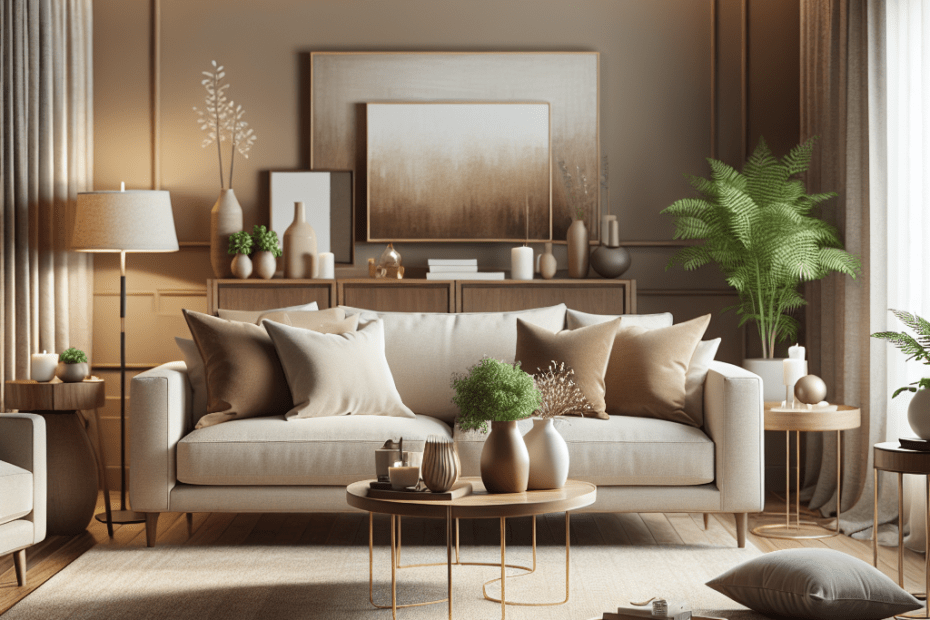“`html
Designing a Home with Warm Neutrals for an Inviting Feel
When they embark on the journey of designing a home, homeowners often seek to create an environment that feels welcoming and comfortable. A warm neutral home design offers just that. By employing a palette of soft, understated colors that radiate warmth, they can achieve a cozy and inviting atmosphere. Warm neutrals include shades like beige, taupe, terracotta, and muted golds, providing a perfect balance between timeless elegance and modern simplicity.
The Appeal of Warm Neutral Home Design
A home adorned with a warm neutral palette is visually soothing yet inherently stylish. According to a study by the Color Marketing Group, neutral colors continue to dominate the interior design scene, with 58% of surveyed designers stating that they frequently use warm beige and taupe hues for creating calming spaces. The trend shows no sign of fading away, as the versatility of these shades blends seamlessly with various design elements and furnishings.
Warm neutral colors are not only about the aesthetic appeal. They reflect a sense of harmony and enhance the natural light within a space. They also set the foundation for a cohesive design, allowing for easy integration of bolder colors and textures as accents.
Elements of Warm Neutral Home Design
Creating a home with warm neutrals involves more than just selecting a color palette; it includes various elements such as textures, materials, and accessories. Below is a table detailing important components of a warm neutral home design:
| Element | Description |
|---|---|
| Color Palette | Beige, taupe, cream, terracotta, and muted gold |
| Texture | Linen, wool, natural woods, and jute |
| Materials | Natural stone, warm metals like brass and copper |
| Lighting | Soft, ambient lighting with warm tones |
| Accessories | Cozy rugs, throw pillows, and subtle artwork |
Steps to Design with Warm Neutrals
1. Start with a Base: They should paint their walls in neutral shades such as cream or light beige. This sets a serene backdrop for the rest of the decor. A report by Sherwin-Williams reveals that homeowners who choose neutral walls experience a 20% increase in perceived home value.
2. Incorporate Textures: To avoid a monotonous look, they should introduce various textures. Adding a woolen rug, a ceramic vase, or a wooden coffee table can add depth and interest.
3. Mingle with Natural Elements: Nature-inspired materials bring a sense of authenticity and warmth. Consider stone countertops, wooden beams, or brass fixtures.
4. Set the Lighting: Lighting plays a crucial role in enhancing warm neutrals. They should use soft bulbs and consider layered lighting, such as floor lamps coupled with pendant lights, to achieve a cozy glow.
5. Add Personal Touches: Finally, they should add personal touches that reflect their style. Throw pillows in warmer shades like rust or moss can tie the room together without overwhelming the senses.
Key Takeaways
- Warm neutral home design is a perfect blend of sophistication and comfort.
- The palette includes shades like beige, taupe, and terracotta.
- It involves elements such as texture, natural materials, and subtle lighting.
- Proper use of these elements results in a cozy and inviting space.
- A warm neutral palette offers timeless appeal and adds perceived value to homes.
FAQs on Warm Neutral Home Design
- What are warm neutrals?
Warm neutrals are colors like beige, taupe, and terracotta that provide a cozy and inviting atmosphere.
- How can textures be used in warm neutral design?
They can use textures like wool, linen, and natural wood to add depth and interest to the space.
- Why are natural materials important?
Natural materials complement warm neutrals, bringing authenticity and a harmonious feel.
- How does lighting affect warm neutral designs?
Soft, ambient lighting with warm tones enhances the cozy atmosphere of warm neutrals.
- What personal touches work best?
Personal touches like throw pillows or subtle art pieces in warmer shades add character without clashing with the palette.
Designing a home with warm neutrals brings together comfort and elegance, creating spaces that feel both welcoming and refined. With the right balance of colors, textures, and materials, they can transform any room into a serene retreat.
“`
